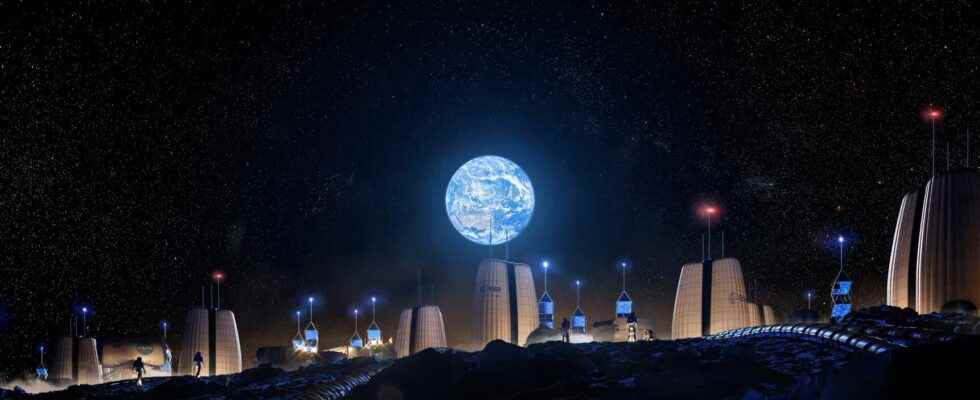In a document published on May 17 on its site, NASA unveils its plans for the future of space exploration by listing the scientific and technological objectives to be achieved in the coming years. The goal: to pave the way for the potential landing of astronauts on Mars.
Although it has still not launched its first Artemis lunar mission, the Nasa is already beginning to orchestrate the arrival ofastronauts on Mars. Human exploration of the Red Planet is considered a key milestone in the future of space exploration, the eccentric billionaire Elon Musk certifying the arrival of the first Martian settlers before 2030. To this end, the American space agency published the May 17, 2022 a document detailing in 50 points the objectives to be accomplished to initiate the rush to Mars. The list is divided into different parts: the design of methods of transport and habitation, the creation of space infrastructures or even the scientific and technical objectives to be accomplished during missions to the Moon or March.
Preparing for the colonization of Mars
With this document, NASA evokes its ambition to to perpetuate the presence of Man in space, and more particularly on the Moon and Mars. The list has several points relating to the creation and establishment of transport networks between Earth and space bases. A relay could thus be set up to allow the transfer of large quantities of material to the Moon, necessary for the structuring of a permanent outpost. NASA wants to anticipate certain problems that could be encountered by astronauts, 300,000 kilometers from Earth. Point n° 8 (TH-8) insists on the need to design a system capable of monitoring the health of astronauts with the aim of being able to provide rapid medical assistance, if an emergency evacuation to Earth is not possible. feasible.
Regarding the establishment of such infrastructures, the ambitions of the American space agency are worthy of the science fiction series The Expanse. NASA wants to build a electrical network on the Moon, capable of providingenergy to one ” industrial scale ». The administration wants to be more measured by addressing the Martian part of the document: establishing a permanent communication network with the Earth and an electrical network allowing theautonomy of a manned mission to the Red Planet.
The report explains that one of the priorities of such missions is to conduct scientific experiments on the surface of Mars and the Moon. The astronauts will thus have to carry out geological surveys, making it possible to study the evolution of our natural satellite and the Red Planet. Future explorers will also look for traces of volcanic or seismic activity, while taking samples that will be repatriated to Earth to be subjected to more exhaustive analyses.
Artemis, the step before Mars
The chances of seeing a human crew land on Mars before 2030 are dwindling. NASA’s main goal, by 2027, is to complete the Artemis program. The latter, launched in 2018 under the administration of Donald Trump, should allow the United States to land astronauts on the Moon, fifty years after the end of the program Apollo. Initially, the Artemis III manned mission was to be launched in 2024. But the many delays incurred by NASA have already caused a postponement of this date to 2025. The first mission of the Artemis program, which will test the capabilities of the new rocket Space Launch System (SLS) and the Orion capsule, should be launched in the summer of 2022, about eight months late. If it is difficult to predict whether NASA will succeed in meeting these new deadlines, the date of arrival of humans on Mars could nevertheless slip beyond 2030.
In the meantime, the two Curiosity rovers and Perseverance continue to roam the desert plains of the Red Planet. They regularly provide new images and data from Mars. The opportunity for researchers to learn more about the history of the planet, its past habitability and potential traces of life when water was present on its surface 3 billion years ago.
Interested in what you just read?
